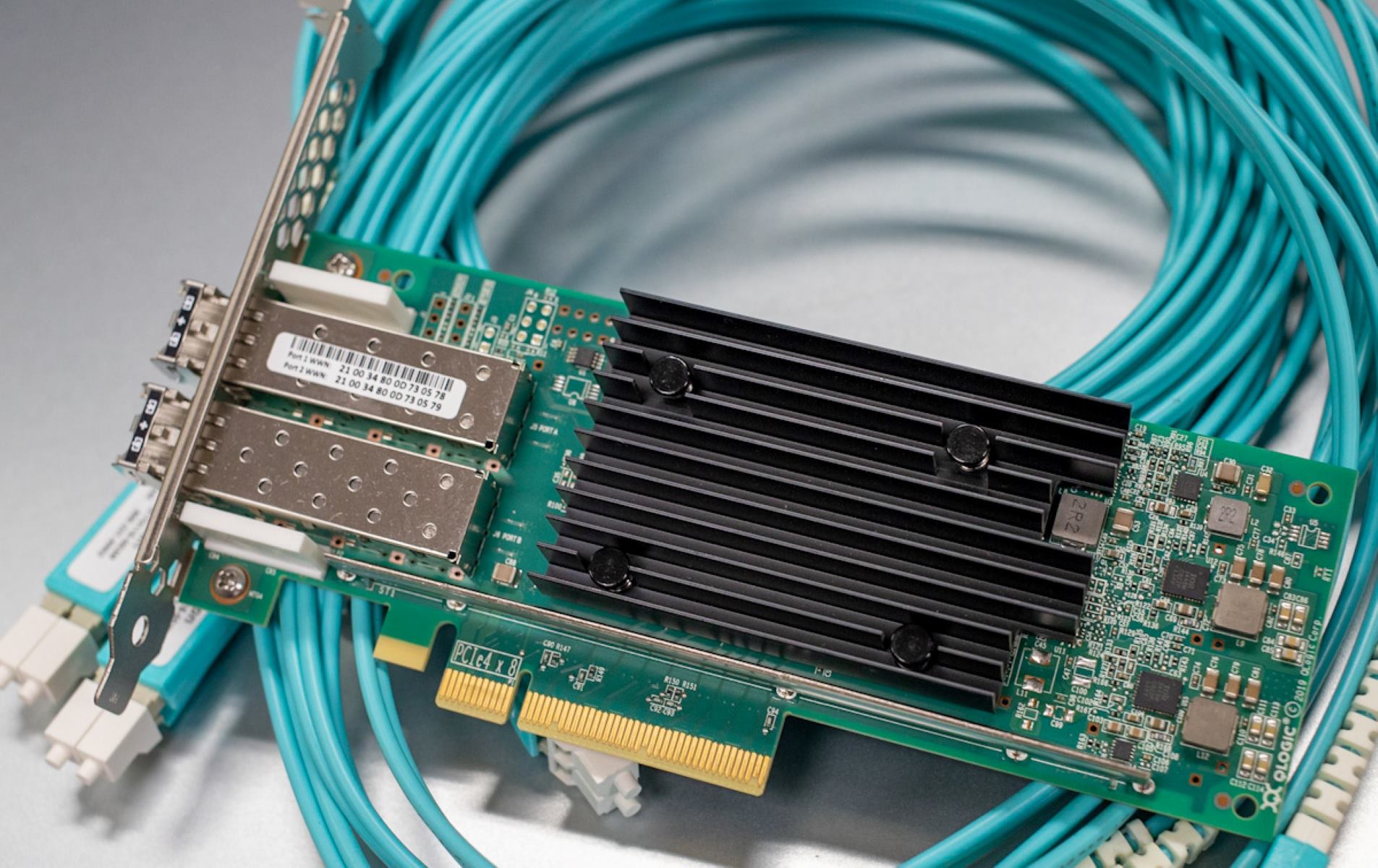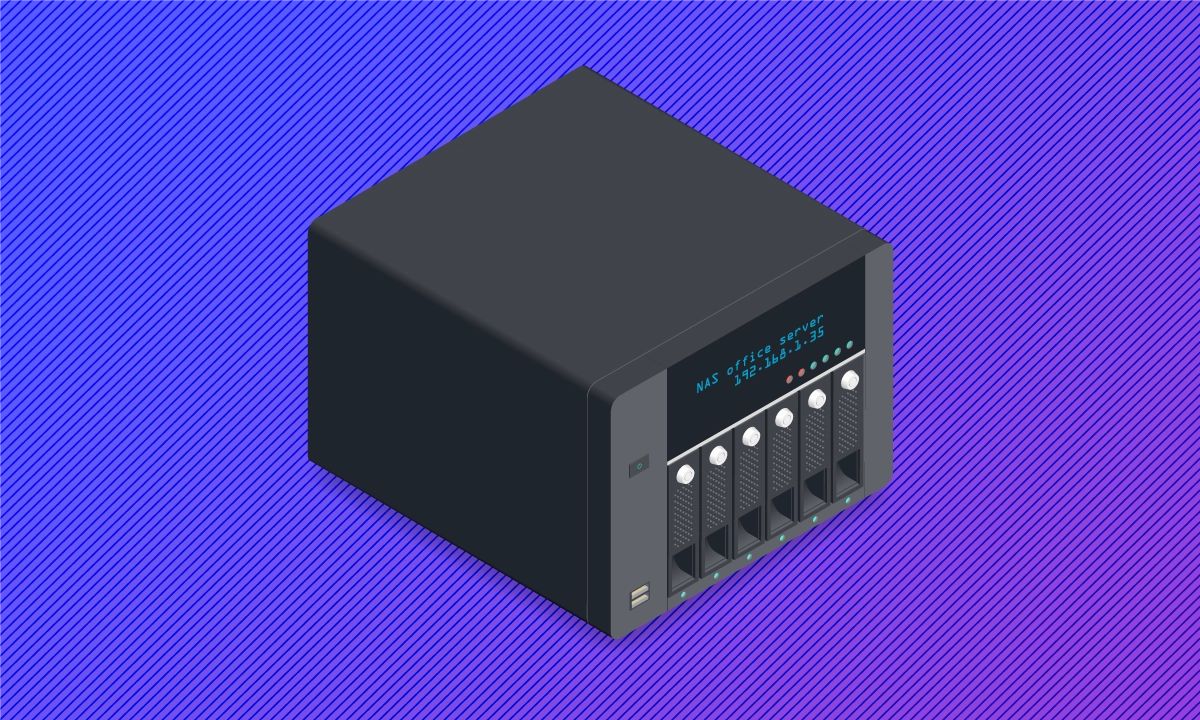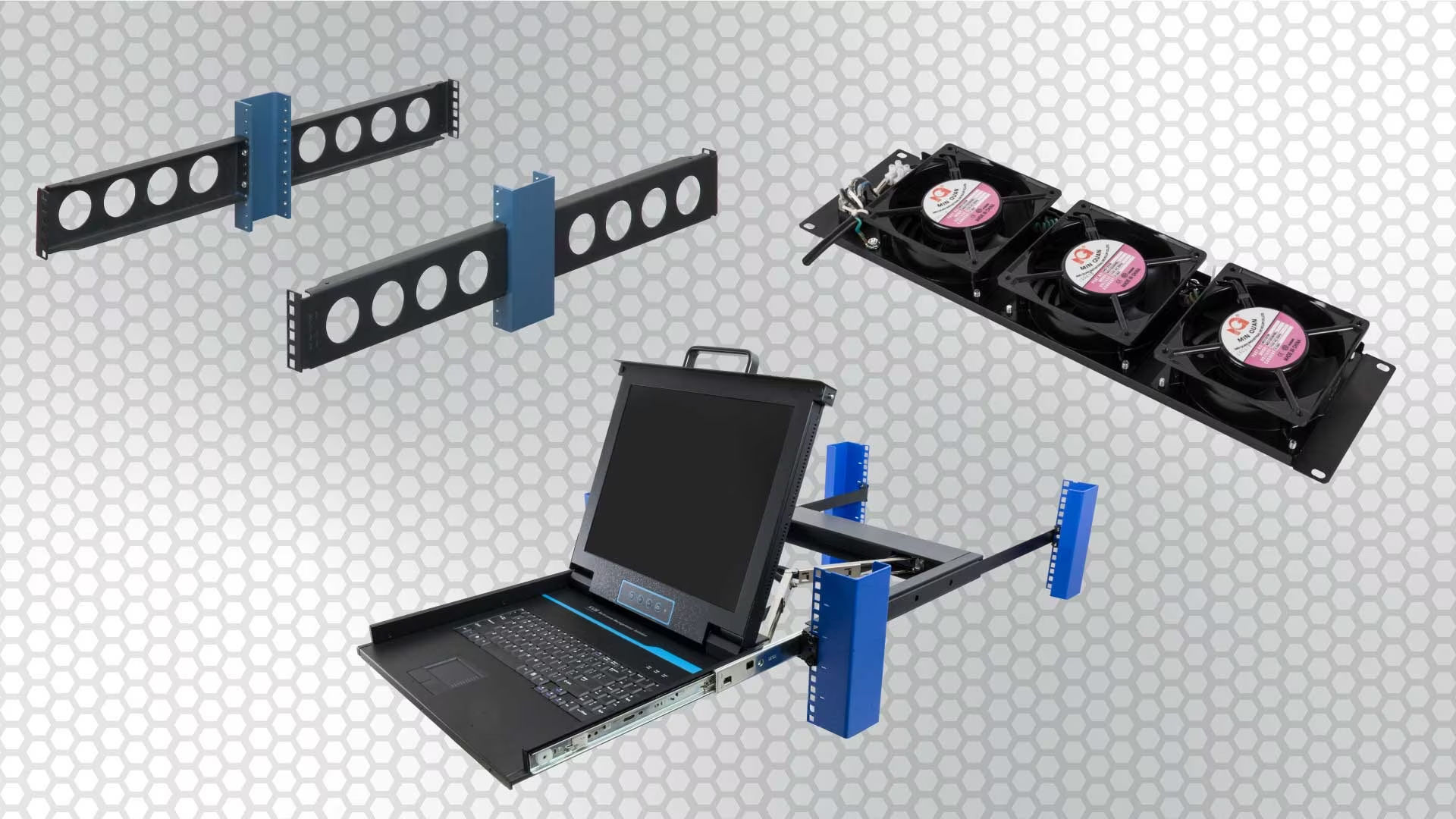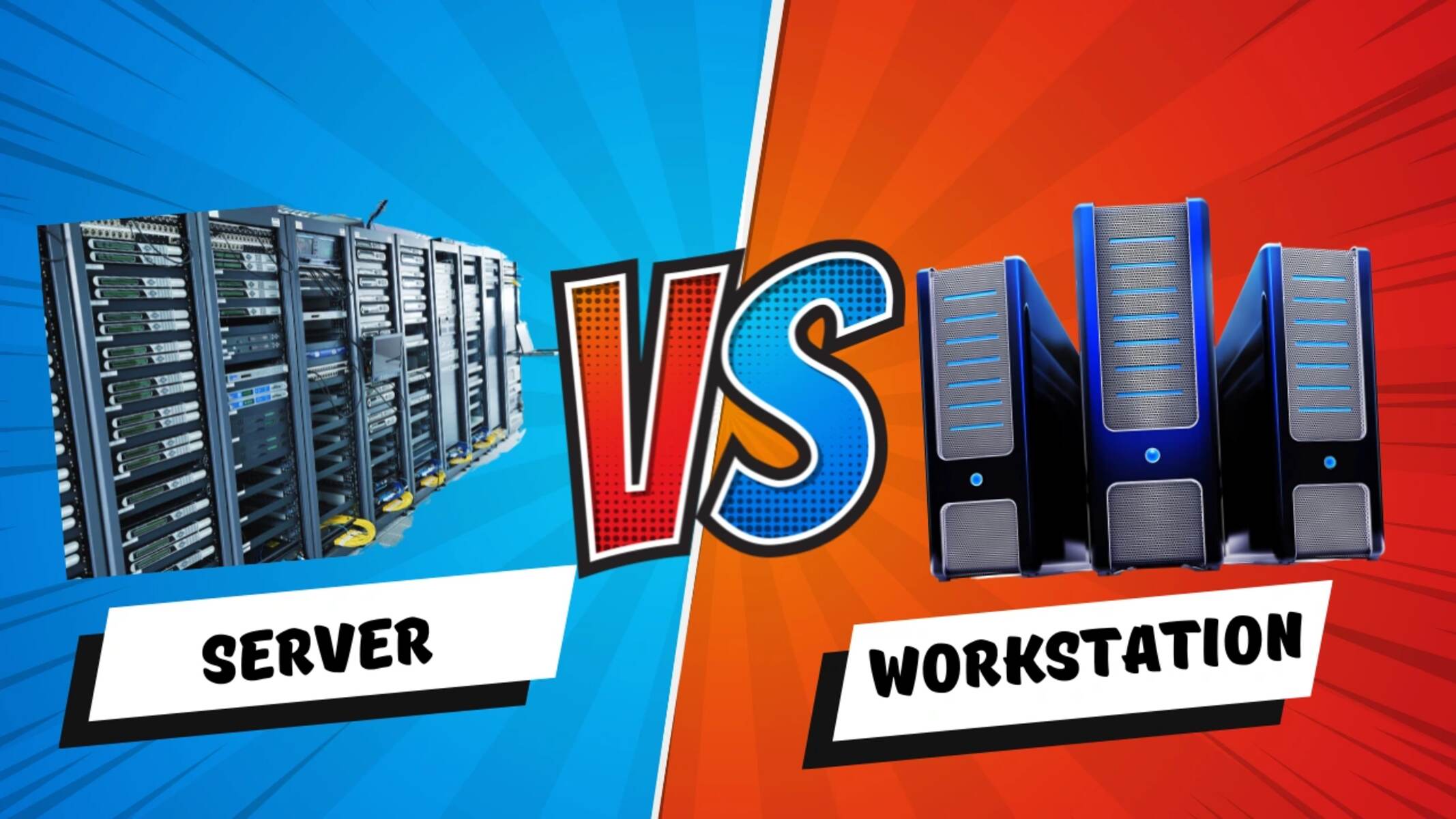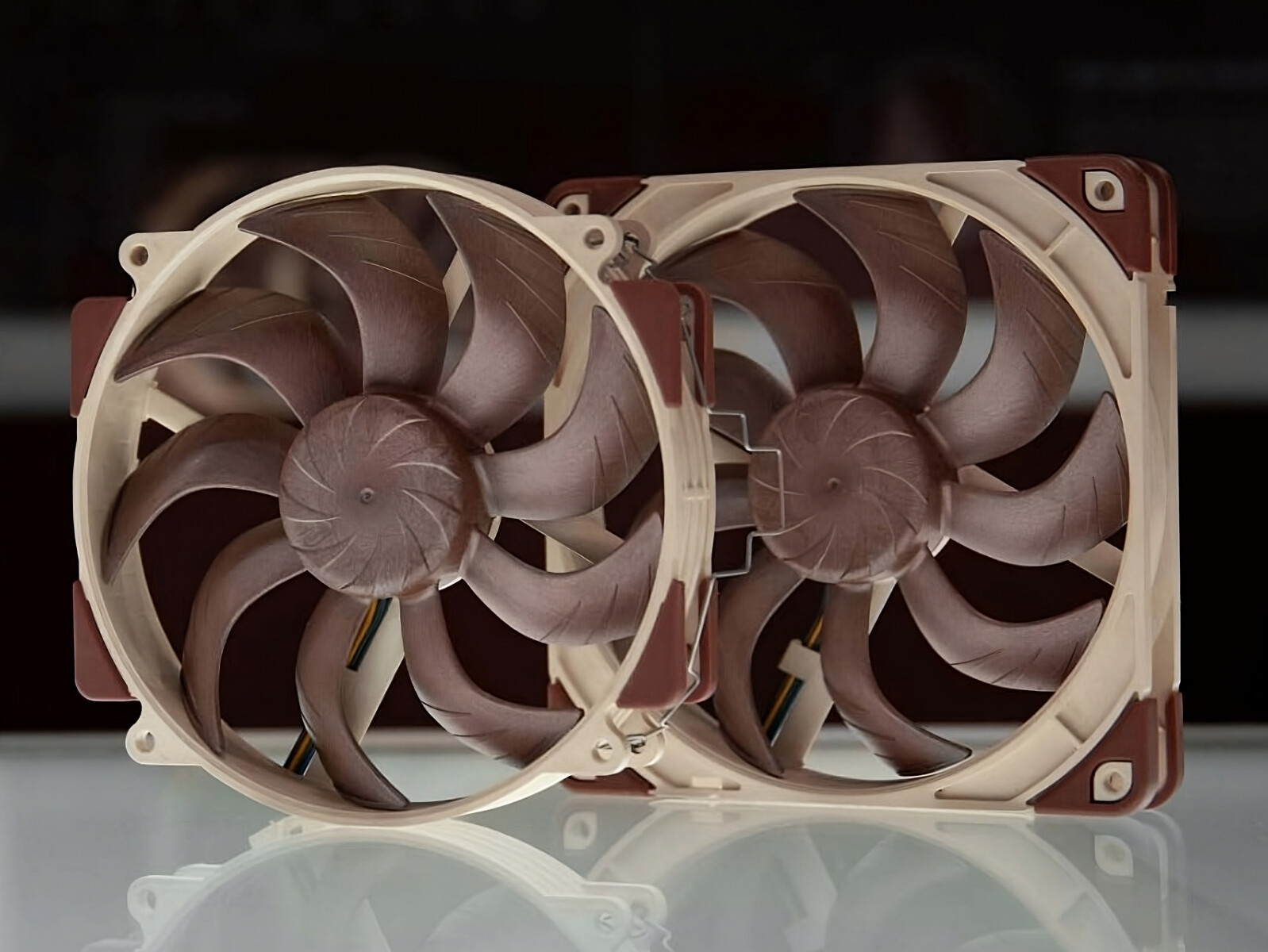Introduction
Welcome to the world of networking where technology continues to evolve and reshape the way we connect and communicate. One such innovation is Fibre Channel Over Ethernet (FCoE), a powerful networking protocol that combines the best of both Fibre Channel and Ethernet technologies. In this article, we will explore what FCoE is all about, its benefits, how it works, and how it differs from traditional Fibre Channel and iSCSI.
In today’s data-driven world, organizations require a reliable and efficient networking solution to handle large amounts of data and ensure seamless connectivity. Fibre Channel, known for its high-speed and low-latency connections, has been a go-to choice for storage networks. Ethernet, on the other hand, is widely used for general-purpose networking due to its scalability and compatibility. FCoE leverages the strengths of both Fibre Channel and Ethernet, bridging the gap between storage and networking to provide a unified solution.
With FCoE, organizations can streamline their network infrastructure by consolidating storage and data networks, reducing the number of adapters and cables, and simplifying management and maintenance. It enables organizations to leverage their existing Ethernet infrastructure while enjoying the benefits of Fibre Channel, such as high performance, reliability, and lossless data transmission.
As data volumes continue to expand exponentially, traditional networking approaches often face limitations in terms of bandwidth, scalability, and cost-effectiveness. FCoE addresses these challenges by providing a cost-efficient solution that can scale to meet the demands of modern data centers. By converging storage and Ethernet networks, FCoE eliminates the need for separate infrastructure, reducing cabling, switches, and network interface cards, resulting in significant cost savings.
In the next sections, we will dig deeper into FCoE, discussing how it works, its components, and the benefits it offers over traditional Fibre Channel and iSCSI. Whether you’re a networking professional or an IT decision-maker, this article will provide you with a solid understanding of FCoE and its potential for enhancing your organization’s network infrastructure.
What is Fibre Channel Over Ethernet (FCoE)?
Fibre Channel Over Ethernet (FCoE) is a networking protocol that allows the transport of Fibre Channel (FC) storage traffic over Ethernet networks. It is designed to combine the benefits of both Fibre Channel and Ethernet technologies, providing a unified solution for storage and networking.
FCoE encapsulates FC frames within Ethernet frames, allowing them to be transmitted over standard Ethernet infrastructure. This means that organizations can leverage their existing Ethernet networks to carry both traditional IP traffic and storage traffic, eliminating the need for separate storage networks.
At its core, FCoE enables the transmission of FC protocols, commands, and data over Ethernet using a series of encapsulation and conversion mechanisms. This allows Fibre Channel storage devices, such as storage area network (SAN) switches and storage arrays, to directly connect to Ethernet-based servers and clients. With FCoE, the storage traffic can traverse the same physical and logical network infrastructure as regular network traffic, simplifying the overall architecture and reducing management overhead.
One of the key advantages of FCoE is its ability to utilize the inherent speed and scalability of Ethernet networks. By leveraging Ethernet’s high-bandwidth capabilities, FCoE can provide the necessary performance and throughput required for storage applications. Additionally, FCoE supports the lossless Ethernet features, such as priority flow control (PFC) and enhanced transmission selection (ETS), ensuring reliable and predictable delivery of storage traffic.
FCoE also offers a seamless migration path for organizations with existing Fibre Channel infrastructure. By implementing FCoE, companies can gradually transition to Ethernet-based networks while still utilizing their existing Fibre Channel investments. This eliminates the need for a complete rip-and-replace approach, minimizing disruption and allowing for a smoother migration process.
In summary, Fibre Channel Over Ethernet (FCoE) is a protocol that allows the transport of Fibre Channel storage traffic over Ethernet networks. It combines the benefits of Fibre Channel and Ethernet, enabling organizations to consolidate their storage and networking infrastructure. FCoE provides a cost-effective, scalable, and high-performance solution for modern data centers, allowing for the efficient utilization of Ethernet networks while maintaining the reliability and features of Fibre Channel storage.
Benefits of FCoE
Fibre Channel Over Ethernet (FCoE) offers numerous benefits that make it an attractive choice for organizations looking to simplify their network infrastructure and enhance their storage capabilities. Let’s explore some of the key advantages that FCoE brings to the table.
1. Consolidation of Network Infrastructure
FCoE allows organizations to consolidate their storage and networking infrastructure into a single, unified solution. By carrying Fibre Channel traffic over Ethernet networks, there is no need for separate Fibre Channel switches or dedicated storage networks. This consolidation results in reduced hardware costs, simplified management, and easier scalability.
2. Cost Savings
By leveraging existing Ethernet infrastructure, organizations can significantly reduce the cost of deploying and maintaining separate Fibre Channel networks. Eliminating the need for dedicated Fibre Channel switches, cabling, and adapters can lead to substantial cost savings in both upfront investments and ongoing operational expenses.
3. Scalability
FCoE provides scalability for storage networks, allowing organizations to adapt to increasing data volumes and performance requirements. With FCoE, it is easier to add additional storage devices and servers to the network without the need for extensive reconfiguration or disruption. This scalability facilitates business growth and enables seamless expansion of storage capabilities.
4. Simplified Management
With FCoE, network administrators can manage both network and storage traffic through a single, unified management interface. This simplifies the overall management process and reduces the complexity associated with maintaining separate storage networks. Administrators can leverage existing network management tools, protocols, and skills, resulting in improved operational efficiency.
5. Performance and Reliability
FCoE provides the high performance and robustness of Fibre Channel while utilizing the speed and scalability of Ethernet. By taking advantage of lossless Ethernet features such as priority flow control (PFC) and enhanced transmission selection (ETS), FCoE ensures the reliable and predictable delivery of storage traffic. This ensures that data is transmitted without performance degradation or packet loss, meeting the demanding requirements of storage applications.
6. Seamless Migration
Organizations with existing Fibre Channel infrastructure can adopt FCoE without disrupting their current environment. FCoE allows for a gradual migration approach, where organizations can incorporate FCoE switches and adapters into their existing Fibre Channel fabric, enabling a smooth transition to the unified FCoE architecture. This flexibility minimizes disruptions, reduces migration complexities, and protects existing investments.
In summary, Fibre Channel Over Ethernet (FCoE) offers a range of benefits, including consolidation of network infrastructure, cost savings, scalability, simplified management, improved performance, and seamless migration. Its ability to combine the strengths of Fibre Channel and Ethernet makes it an attractive solution for organizations looking to optimize their storage networks and enhance their overall network architecture.
How Does FCoE Work?
Fibre Channel Over Ethernet (FCoE) functions by encapsulating Fibre Channel frames within Ethernet frames, enabling storage traffic to be transmitted over Ethernet networks. To understand how FCoE works, let’s take a closer look at the key components and processes involved.
1. FCoE Initialization
When a server or device wants to communicate with a Fibre Channel storage target, it initiates an FCoE initialization process. This involves establishing a link between the FCoE initiator and the FCoE target, such as a storage array or a Fibre Channel switch.
2. FCoE Encapsulation
Once the FCoE link is established, the Fibre Channel frames are encapsulated within Ethernet frames. This is done using the Ethernet encapsulation format, which adds an FCoE header to the Fibre Channel payload. The FCoE header includes information such as the source and destination FCIDs (Fibre Channel Identifiers) and the type of frame being transmitted.
3. Priority Flow Control (PFC)
To ensure lossless transmission of storage traffic, FCoE utilizes Priority Flow Control (PFC) within the Ethernet network. PFC allows FCoE frames to have higher priority than other network traffic, preventing congestion and ensuring that storage frames are transmitted reliably and without delays.
4. Virtual Link and Virtual Link Control Protocol (VL/VLCP)
To establish a point-to-point connection between the FCoE initiator and the FCoE target, a Virtual Link (VL) is created. The Virtual Link Control Protocol (VLCP) is responsible for managing and monitoring the Virtual Link, ensuring its functionality and reliability.
5. Fibre Channel Forwarder (FCF)
In an FCoE network, a Fibre Channel Forwarder (FCF) acts as a bridge between the Fibre Channel fabric and the Ethernet network. The FCF is responsible for handling FCoE traffic, converting Fibre Channel frames into Ethernet frames and vice versa. It maintains the mapping between FCoE devices and Fibre Channel identifiers, allowing seamless communication between the two protocols.
6. FCoE Frame Forwarding
Once the FCoE frames are encapsulated and ready for transmission, they are forwarded across the Ethernet network like any other Ethernet traffic. They can be routed through Ethernet switches, bridged to other VLANs, or sent to FCoE target devices.
7. Fibre Channel Processing
At the receiving end, the FCoE frames are decapsulated, and the original Fibre Channel frames are extracted. These Fibre Channel frames are then processed by the Fibre Channel target device, such as a storage array or a Fibre Channel switch, using traditional Fibre Channel protocols and commands.
In summary, Fibre Channel Over Ethernet (FCoE) works by encapsulating Fibre Channel frames within Ethernet frames, utilizing the Ethernet network for transporting storage traffic. The FCoE initialization process sets up the communication between FCoE initiators and targets, while the FCoE encapsulation enables the transmission of Fibre Channel frames over Ethernet. Priority Flow Control (PFC) ensures lossless transmission, and the Virtual Link Control Protocol (VLCP) manages the Virtual Link between devices. The Fibre Channel Forwarder (FCF) acts as a bridge, converting FCoE frames to Fibre Channel frames, and vice versa. Overall, FCoE combines the best of Fibre Channel and Ethernet to provide a unified and efficient solution for storage networking.
Components of FCoE
Fibre Channel Over Ethernet (FCoE) is composed of various components that work together to enable the seamless transmission of Fibre Channel traffic over Ethernet networks. Let’s explore the key components that make up an FCoE infrastructure.
1. FCoE Initiator
The FCoE initiator is responsible for initiating the FCoE communication and sending Fibre Channel traffic over the Ethernet network. It can be a host server, a storage device, or a Fibre Channel adapter that supports FCoE functionality. The FCoE initiator encapsulates the Fibre Channel frames into Ethernet frames and transmits them over the Ethernet network.
2. FCoE Target
On the receiving end, the FCoE target receives the incoming Ethernet frames containing the encapsulated Fibre Channel traffic. It can be a storage array, a Fibre Channel switch, or any other device that supports FCoE integration. The FCoE target performs the necessary decapsulation to extract the original Fibre Channel frames, which are then processed by the target device using traditional Fibre Channel protocols.
3. Converged Network Adapter (CNA)
The Converged Network Adapter (CNA) is a special type of network interface card (NIC) that combines both Ethernet and Fibre Channel functionality. It allows servers and storage devices to leverage the benefits of FCoE by providing the necessary connectivity and protocol conversion capabilities. CNAs can handle both traditional IP traffic and FCoE traffic, enabling the convergence of storage and networking infrastructures.
4. FCoE Switch
The FCoE switch is a crucial component in an FCoE infrastructure. It acts as a bridge between the Ethernet network and the Fibre Channel fabric, enabling the conversion of FCoE frames to native Fibre Channel frames and vice versa. The FCoE switch forwards the FCoE frames across the Ethernet network while maintaining the integrity and reliability of the Fibre Channel traffic. It ensures that the FCoE initiators and targets can communicate seamlessly within the FCoE environment.
5. Fibre Channel Forwarder (FCF)
The Fibre Channel Forwarder (FCF) is another key component in an FCoE infrastructure. It is responsible for managing the FCoE traffic within the Fibre Channel fabric. The FCF maps the FCoE initiators and targets to their respective Fibre Channel identifiers (FCIDs), allowing them to communicate with each other transparently. The FCF performs the necessary protocol conversions between FCoE and Fibre Channel, facilitating the integration of FCoE devices into existing Fibre Channel fabrics.
6. Ethernet Network
The Ethernet network forms the foundation for FCoE deployments. It provides the physical and logical infrastructure for transmitting FCoE frames between the FCoE initiators, FCoE switches, and FCoE targets. The Ethernet network must support the necessary bandwidth and lossless Ethernet features, such as priority flow control (PFC) and enhanced transmission selection (ETS), to ensure reliable and predictable delivery of storage traffic.
In summary, the components of Fibre Channel Over Ethernet (FCoE) include the FCoE initiator, FCoE target, converged network adapter (CNA), FCoE switch, Fibre Channel forwarder (FCF), and the Ethernet network. These components work in harmony to enable the encapsulation and transmission of Fibre Channel frames over Ethernet, creating a unified solution for storage and networking. The combination of these components allows organizations to streamline their network infrastructure, reduce costs, and leverage the performance and scalability of Ethernet while harnessing the reliability and features of Fibre Channel.
FCoE Vs Traditional Fibre Channel
Fibre Channel Over Ethernet (FCoE) and traditional Fibre Channel are both storage networking technologies that serve the same purpose of enabling reliable and high-performance data storage. However, there are some key differences between the two. Let’s explore how FCoE compares to traditional Fibre Channel.
1. Network Infrastructure
In traditional Fibre Channel deployments, separate Fibre Channel switches and dedicated storage networks are required to handle storage traffic. This adds complexity, as it involves deploying and managing separate infrastructure for storage. On the other hand, FCoE combines storage and networking traffic over a shared Ethernet infrastructure, allowing for the consolidation of network infrastructure. This simplifies the architecture, reduces hardware costs, and provides better scalability.
2. Protocol and Frame Structure
Traditional Fibre Channel uses its own protocol stack and frame structure, optimized for storage traffic. In contrast, FCoE encapsulates Fibre Channel frames within Ethernet frames, using Ethernet as the transport system. This enables the transmission of Fibre Channel traffic over Ethernet networks, leveraging the existing Ethernet infrastructure while utilizing the performance and reliability features of Fibre Channel.
3. Connectivity Options
Traditional Fibre Channel deployments require dedicated Fibre Channel host bus adapters (HBAs) and Fibre Channel switches for connectivity between servers and storage. FCoE, on the other hand, allows for connectivity using Converged Network Adapters (CNAs) that support both Ethernet and Fibre Channel protocols. This enables the convergence of storage and networking on a single adapter, reducing the number of adapters required in a server and simplifying the connectivity options.
4. Performance and Bandwidth
Both FCoE and traditional Fibre Channel technologies offer high-performance and low-latency characteristics. However, traditional Fibre Channel has been specifically designed for storage traffic and is known for its deterministic and predictable performance. FCoE, while leveraging the speed and scalability of Ethernet, also provides reliable and lossless transmission of storage traffic through features such as Priority Flow Control (PFC) and Enhanced Transmission Selection (ETS).
5. Migration and Interoperability
One advantage of FCoE is its seamless compatibility and interoperability with existing Fibre Channel infrastructure. Organizations can gradually migrate to FCoE by incorporating FCoE switches and CNAs into their existing Fibre Channel fabric, allowing for a smooth transition. This eliminates the need for a complete rip-and-replace approach. Traditional Fibre Channel, on the other hand, requires a separate infrastructure and is not directly compatible with Ethernet-based networks.
In summary, FCoE and traditional Fibre Channel have significant differences in terms of network infrastructure, protocol and frame structure, connectivity options, performance, and migration capabilities. FCoE provides the advantage of consolidating storage and networking traffic over a shared Ethernet infrastructure, reducing costs and complexity. Traditional Fibre Channel, on the other hand, offers a deterministic and purpose-built solution for storage traffic. The choice between FCoE and traditional Fibre Channel depends on the specific requirements, existing infrastructure, and future scalability needs of the organization.
FCoE Vs iSCSI
Fibre Channel Over Ethernet (FCoE) and iSCSI are both storage networking technologies that enable the transmission of storage traffic over IP-based networks. While they serve a similar purpose of transporting storage data, there are several key differences between FCoE and iSCSI. Let’s compare these two technologies to understand their strengths and considerations.
1. Protocol and Frame Structure
FCoE encapsulates Fibre Channel frames within Ethernet frames, utilizing the Ethernet protocol as the transport system. This allows for the seamless integration of Fibre Channel storage devices into Ethernet-based networks. On the other hand, iSCSI encapsulates SCSI commands within IP packets, enabling storage traffic to be transported over standard IP networks. This makes iSCSI more versatile, as it can utilize existing IP infrastructure.
2. Network Infrastructure and Components
FCoE requires specialized network components, including FCoE switches and Converged Network Adapters (CNAs) that support both Ethernet and Fibre Channel protocols. These components enable the convergence of storage and networking traffic over a single network infrastructure. iSCSI, on the other hand, uses standard Ethernet networking components such as switches, routers, and network interface cards (NICs), making it easier to implement and leverage existing IP infrastructure.
3. Performance and Latency
FCoE provides high performance and low-latency characteristics similar to traditional Fibre Channel due to its use of Fibre Channel protocols. It leverages lossless Ethernet features, like Priority Flow Control (PFC) and Enhanced Transmission Selection (ETS), to ensure reliable and predictable delivery of storage traffic. iSCSI, being an IP-based protocol, may introduce higher latency and lower performance compared to FCoE, especially in high-demand environments. However, advancements in networking technologies continue to close the performance gap between FCoE and iSCSI.
4. Scalability and Bandwidth Considerations
Both FCoE and iSCSI are scalable solutions, but they have different considerations. FCoE leverages Ethernet’s scalability and bandwidth capabilities, allowing for higher throughput and performance as Ethernet technology evolves. On the other hand, iSCSI utilizes standard IP networks, which may require additional considerations for scalability and bandwidth management as the storage environment grows. Effective network design, including Quality of Service (QoS) implementation, is crucial for optimizing iSCSI performance and ensuring consistent storage traffic delivery.
5. Migration and Interoperability
FCoE offers a seamless migration path for organizations with existing Fibre Channel infrastructure. It allows for the gradual adoption of FCoE components into the existing fabric, minimizing disruption and protecting previous investments. iSCSI, being a standard IP-based protocol, provides interoperability with various operating systems and storage platforms, making it easier to integrate into heterogeneous environments.
In summary, while both FCoE and iSCSI offer solutions for transporting storage traffic over IP-based networks, they have distinct differences. FCoE integrates Fibre Channel into Ethernet networks, leveraging the performance and reliability of Fibre Channel while utilizing Ethernet’s scalability. iSCSI, on the other hand, allows for the transmission of storage traffic over standard IP infrastructure, providing flexibility and interoperability. The choice between FCoE and iSCSI depends on factors such as the existing infrastructure, performance requirements, scalability considerations, and migration strategy of the organization.
Implementing FCoE
Implementing Fibre Channel Over Ethernet (FCoE) involves several key steps to ensure a successful integration of FCoE into an existing network infrastructure. Let’s explore the important considerations and steps for implementing FCoE.
1. Assess Network Readiness
Before implementing FCoE, it is crucial to assess the readiness of the network infrastructure. The Ethernet network should support the necessary bandwidth and lossless Ethernet features, such as Priority Flow Control (PFC) and Enhanced Transmission Selection (ETS), to ensure reliable and predictable delivery of storage traffic. Conducting a thorough network assessment will help identify any potential network issues that could impact FCoE performance.
2. Upgrade Network Components
To support FCoE, the network infrastructure may require upgrades or enhancements. This could include upgrading Ethernet switches to ensure they have the necessary features and bandwidth capacity. Additionally, implementing Converged Network Adapters (CNAs) in servers and storage devices will enable the convergence of storage and networking traffic. It is essential to ensure compatibility and interoperability between the FCoE components and the existing network infrastructure.
3. Configure FCoE Switches
Configuring FCoE switches is a crucial step in implementing FCoE. The switches should be properly configured to support FCoE traffic, including enabling FCoE on desired switch ports, configuring Virtual Links (VLs) for FCoE traffic, and setting up Fibre Channel Forwarders (FCFs) to manage the FCoE traffic within the Fibre Channel fabric. Proper configuration of FCoE switches ensures the seamless integration of FCoE initiators and targets into the existing fabric.
4. Enable FCoE on CNAs
Once the network infrastructure is ready, FCoE functionality needs to be enabled on the Converged Network Adapters (CNAs) installed in the servers and storage devices. This involves configuring the CNAs to support both Ethernet and Fibre Channel protocols, allowing for the convergence of storage and networking traffic. Proper configuration of CNAs will enable FCoE initiators and targets to communicate seamlessly over the Ethernet network.
5. Test and Validate
After implementing FCoE, thorough testing and validation are essential to ensure the solution is functioning as expected. This includes testing end-to-end connectivity between FCoE initiators and targets, validating the performance and reliability of FCoE traffic, and confirming the compatibility of FCoE components with the existing infrastructure. Testing and validation help identify and address any issues or bottlenecks early on, ensuring a smooth and successful FCoE deployment.
6. Monitoring and Management
Ongoing monitoring and management of the FCoE infrastructure are critical for maintaining optimal performance and addressing any potential issues. Monitoring tools can be used to track FCoE traffic, identify performance bottlenecks, and ensure compliance with service level agreements. Additionally, having a comprehensive management plan in place will facilitate efficient administration and troubleshooting of the FCoE environment.
In summary, implementing Fibre Channel Over Ethernet (FCoE) involves assessing network readiness, upgrading network components, configuring FCoE switches, enabling FCoE on CNAs, testing and validating the solution, and establishing monitoring and management processes. By following these steps and considering the specific requirements of the organization, businesses can successfully deploy and leverage the benefits of FCoE, including the consolidation of storage and networking traffic, improved performance, and simplified management.
Considerations for FCoE Deployment
Deploying Fibre Channel Over Ethernet (FCoE) requires careful planning and consideration to ensure a smooth and successful implementation. Let’s explore some key considerations that organizations should keep in mind when deploying FCoE.
1. Network Design and Architecture
Before deploying FCoE, it is important to have a well-designed network architecture that supports the convergence of storage and networking traffic. Consider factors such as network topology, bandwidth requirements, scalability, and future growth. Proper network design ensures that sufficient bandwidth and network resources are allocated to accommodate FCoE traffic without impacting the performance of other applications and services.
2. Training and Expertise
FCoE deployment requires expertise in both Fibre Channel and Ethernet technologies. Ensure that network administrators and IT staff members undergo the necessary training to understand the concepts, protocols, and configurations related to FCoE. Having knowledgeable personnel will ensure proper implementation, monitoring, and troubleshooting of the FCoE infrastructure.
3. Compatibility and Interoperability
Verify the compatibility and interoperability of FCoE components with the existing network infrastructure. This includes switches, adapters, storage devices, and management tools. Ensure that the FCoE components are certified to work together and that they can integrate seamlessly into the existing architecture without causing any conflicts or incompatibilities.
4. Performance and Redundancy
Consider the performance requirements of your storage environment and ensure that the FCoE solution can meet those requirements. Evaluate the performance characteristics of FCoE switches, CNAs, and storage devices to ensure they can handle the expected workload. Additionally, ensure that the FCoE deployment incorporates redundancy mechanisms, such as dual switches or redundant paths, to guarantee high availability and data resiliency.
5. Security and Data Protection
As with any storage solution, security and data protection are of utmost importance. Implement appropriate security measures, such as access control mechanisms, authentication protocols, and encryption, to safeguard the FCoE infrastructure and protect sensitive data. Consider implementing storage-specific data protection mechanisms, such as data deduplication, snapshots, and replication, to ensure data integrity and facilitate disaster recovery processes.
6. Scalability and Future Expansion
Plan for future scalability and expansion when deploying FCoE. Assess the expected growth of storage data and ensure that the FCoE infrastructure can accommodate the increasing demands. Consider factors such as available ports, bandwidth capacity, and management capabilities. Implement a scalable architecture and keep scalability in mind when selecting FCoE components to avoid potential bottlenecks or limitations in the future.
In summary, when deploying Fibre Channel Over Ethernet (FCoE), organizations should consider network design, training and expertise, compatibility and interoperability, performance and redundancy, security and data protection, as well as scalability and future expansion. Careful planning and consideration of these factors will result in a well-designed, efficient, and reliable FCoE deployment that meets the organization’s storage and networking requirements.
Conclusion
Fibre Channel Over Ethernet (FCoE) offers organizations a powerful solution for simplifying their network infrastructure while enhancing storage capabilities. By leveraging the strengths of both Fibre Channel and Ethernet technologies, FCoE enables the convergence of storage and networking traffic over a unified architecture.
The benefits of FCoE are numerous. It allows for the consolidation of network infrastructure, resulting in reduced costs, simplified management, and improved scalability. FCoE takes advantage of Ethernet’s speed and scalability, while providing the reliability, low latency, and performance of Fibre Channel. Organizations can seamlessly integrate FCoE into their existing Fibre Channel fabric, leveraging their current investments and gradually migrating to a unified FCoE architecture.
Additionally, FCoE provides compatibility and interoperability, allowing for the integration of various components and storage platforms in heterogeneous environments. It offers a high-performance and low-latency solution for storage traffic, ensuring reliable and predictable delivery of data.
However, deploying FCoE requires careful planning and consideration. Network design, expertise, compatibility, performance, security, and scalability are all factors that organizations must evaluate to ensure a successful FCoE deployment. Ongoing monitoring and management are also crucial for maintaining optimal performance and addressing any issues that may arise.
In conclusion, Fibre Channel Over Ethernet (FCoE) presents a flexible and efficient solution for organizations looking to streamline their network infrastructure, enhance storage capabilities, and reduce costs. By effectively implementing FCoE and considering the various deployment considerations, businesses can take advantage of the benefits of FCoE and optimize their storage networking environment. FCoE provides a reliable and scalable foundation for the future needs of data-intensive applications, ensuring seamless connectivity and efficient data management.







